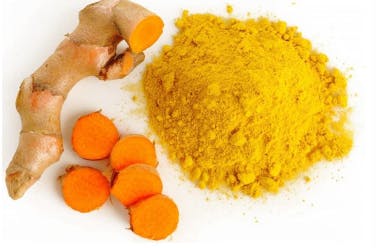Do you know what’s the turmeric extract powder?
Curcumin was first isolated as a low molecular weight polyphenolic compound from Curcumalonga L. in 1870. With the deepening of research on curcumin, it has been found that it has a wide range of pharmacological activities such as anti-inflammatory, antioxidant, antiviral, anti-infective, anti-tumor, anti-hepatic fibrosis, anti-atherosclerosis, etc., and has low toxicity and adverse effects. Curcumin is currently one of the largest natural food colorings in the world and is a food additive approved by the World Health Organization, the U.S. Food and Drug Administration, and many countries. An NSAID that attracts researchers because of its chemopreventive properties is also useful for the broad prevention of disease.
The main sources of curcumin are the tuberous root of ginger turmeric, turmeric rhizome, Curcuma rhizome, and iris rhizome of the Araceae plant, etc. Curcumin is orange-yellow crystalline powder, slightly bitter in taste, insoluble in water and ether, soluble in ethanol and propylene glycol, easily soluble in glacial acetic acid and alkaline solution, reddish-brown in alkaline, yellow in neutral and acidic. So modern chemistry uses this property as an acid-base indicator.
Turmeric is a commonly used medicine, and its main bioactive components are curcumin and volatile oil. The former has the functions of lowering blood lipids, anticoagulation, antioxidant, choleretic, and anticancer; while the latter mainly plays the role of anti-inflammatory, antibacterial and antitussive. Curcuminoids exert their anticancer effects by inducing the differentiation of malignant tumor cells, inducing tumor cell apoptosis, and inhibiting tumor growth in various stages, and are widely used in clinical practice.
The picture is the turmeric extract powder.
